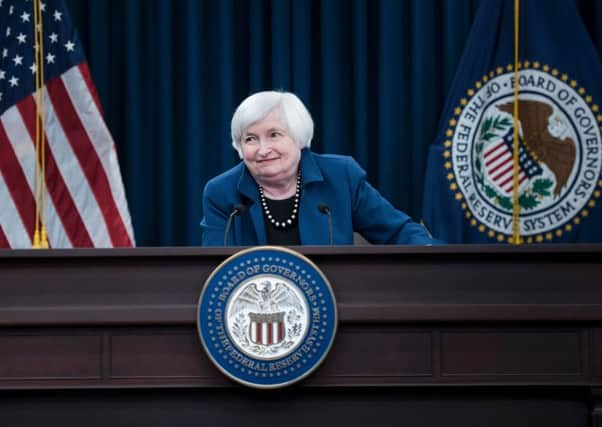Adam Chester: What do US rates mean for Scots firms?
This article contains affiliate links. We may earn a small commission on items purchased through this article, but that does not affect our editorial judgement.


Markets were generally buoyed by the Fed’s decision to lift interest rates by a quarter of a percentage point to a range of 0.75 per cent to 1 per cent, which was in line with expectations.
• READ MORE: Central banks go separate ways on interest rates
Advertisement
Hide AdAdvertisement
Hide AdAmerica is the UK’s second-largest trading partner after the European Union, accounting for 17 per cent of exports in 2015, according to the Office for National Statistics. So the US economy is news for Scottish businesses.
Medium-term projections forecast a total of three rate rises this year, although there had been predictions from bullish analysts that the Fed would be more aggressive in its programme of increases and schedule a fourth during 2017.
However, after Wednesday’s announcement, the probability of a shift from three to four rises dropped to 55 per cent, down from 64 per cent. And as the Fed was a little softer on future rates, the dollar dipped in value slightly overnight.
The value of the US dollar has a real impact on the purchasing power of sterling. The effect of a lower dollar has been a marginal rise in the pound. If that continues, it would make Scotland’s exporters a little less competitive when selling in foreign currency – though this is on the back of a longer-term boost to competitiveness from the currency markets in the last year.
In particular, Scotland’s oil industry is affected by currency markets. Since oil is priced in dollars, when the dollar is worth more, oil brings in more pounds. This means a higher dollar can help Scotland’s oil industry, while a marginally lower dollar this morning could be a slight dampener.
Oil prices themselves are on the radar of the Federal Reserve, too. Much of the global return of inflation has been caused by a recovery in oil prices from record lows a year ago. Oil has taken a minor knock in the last week, but a strong annual increase is already feeding though into inflation.
Here in the UK, the Bank of England is facing a similar balancing act as the Federal Reserve in the US. Consumer price inflation is almost back to the official 2 per cent target – and we’ll see next Tuesday if UK price rises exceed that pace for the first time since 2013.
Advertisement
Hide AdAdvertisement
Hide AdSo far, equity prices around the world have risen strongly in reaction to the Federal Reserve’s decision. And this mirrors an overall tone of reassurance. Other factors are involved in the rally too: news of a more mainstream victory in the Dutch elections has helped.
That’s not to say things can’t change. The Federal Reserve identified a few things to keep an eye on. Economic news in the US is mixed, but if the American labour market continues to rapidly create jobs, wage growth risks pushing up inflation. In response, interest rates might need to rise more quickly than expected.
Similarly, Donald Trump’s new administration may use government funds to stimulate the US economy through additional spending, also possibly pushing up rates faster.
Scotland’s businesses have plenty of other sources of uncertainty right now; from a potentially drawn-out process of leaving the EU, to a possible new referendum on leaving the UK following that.
The good news is that the US Federal Reserve isn’t adding to that too seriously yet.
• Adam Chester is head of economics, commercial banking at Bank of Scotland